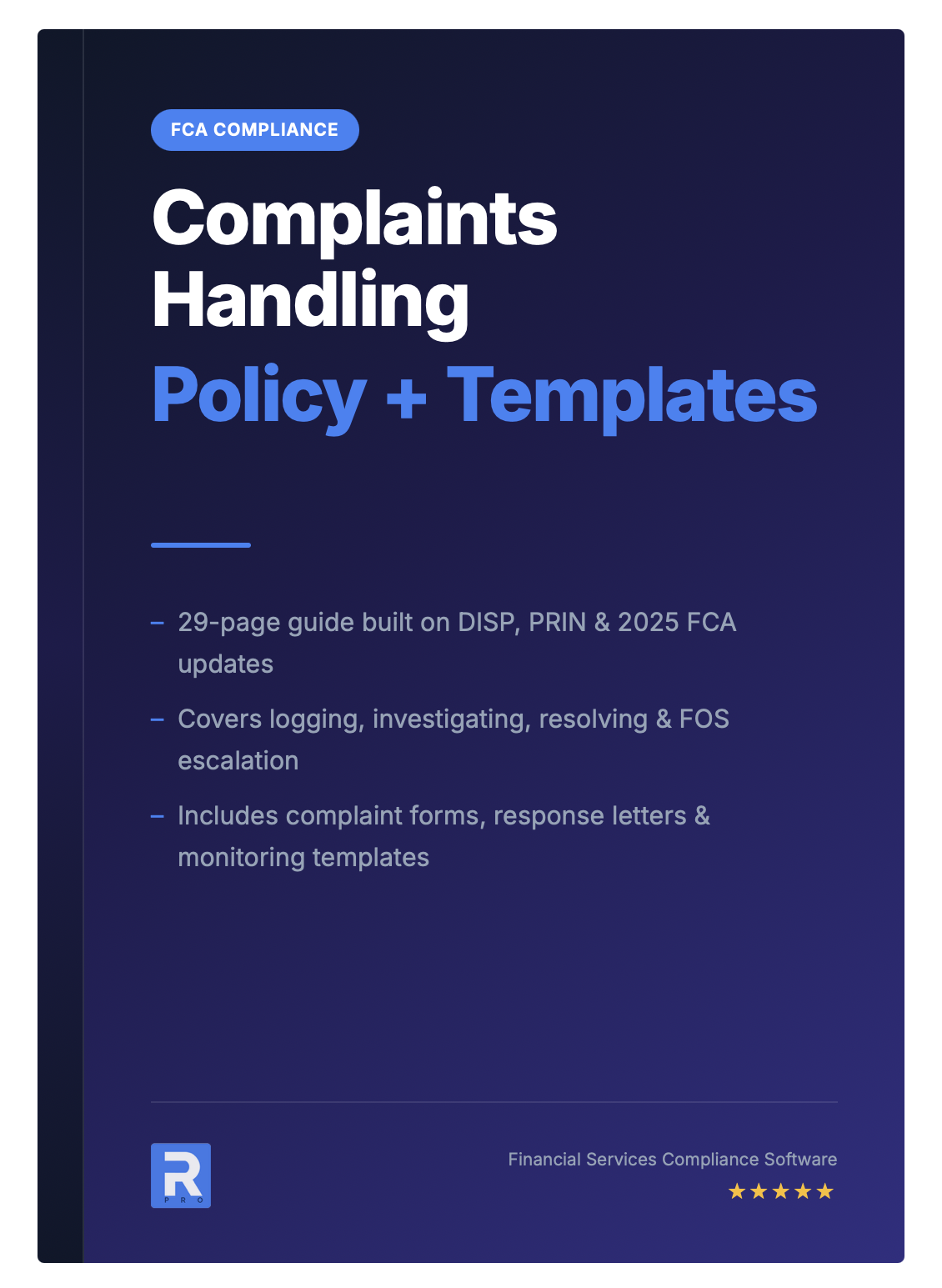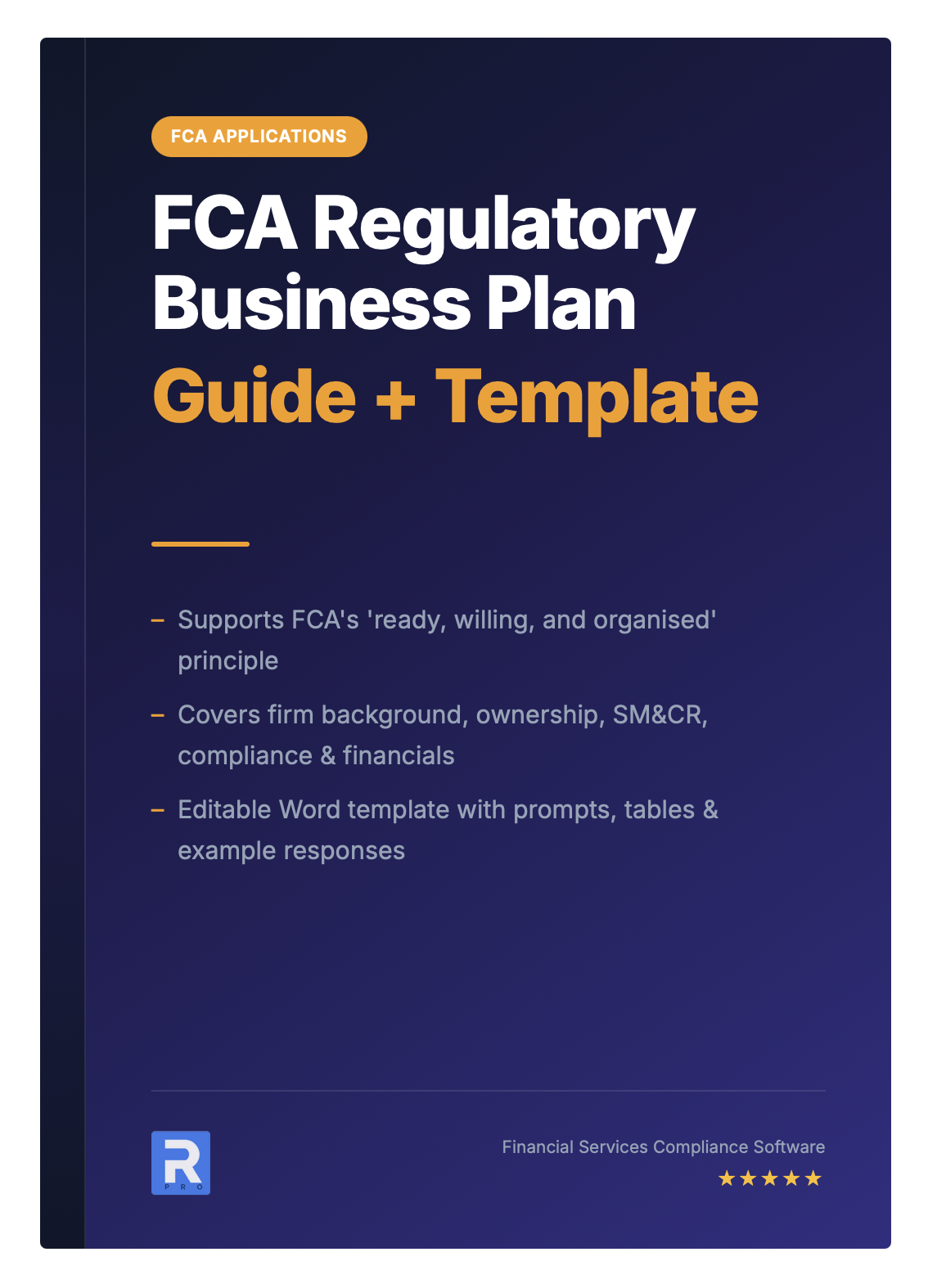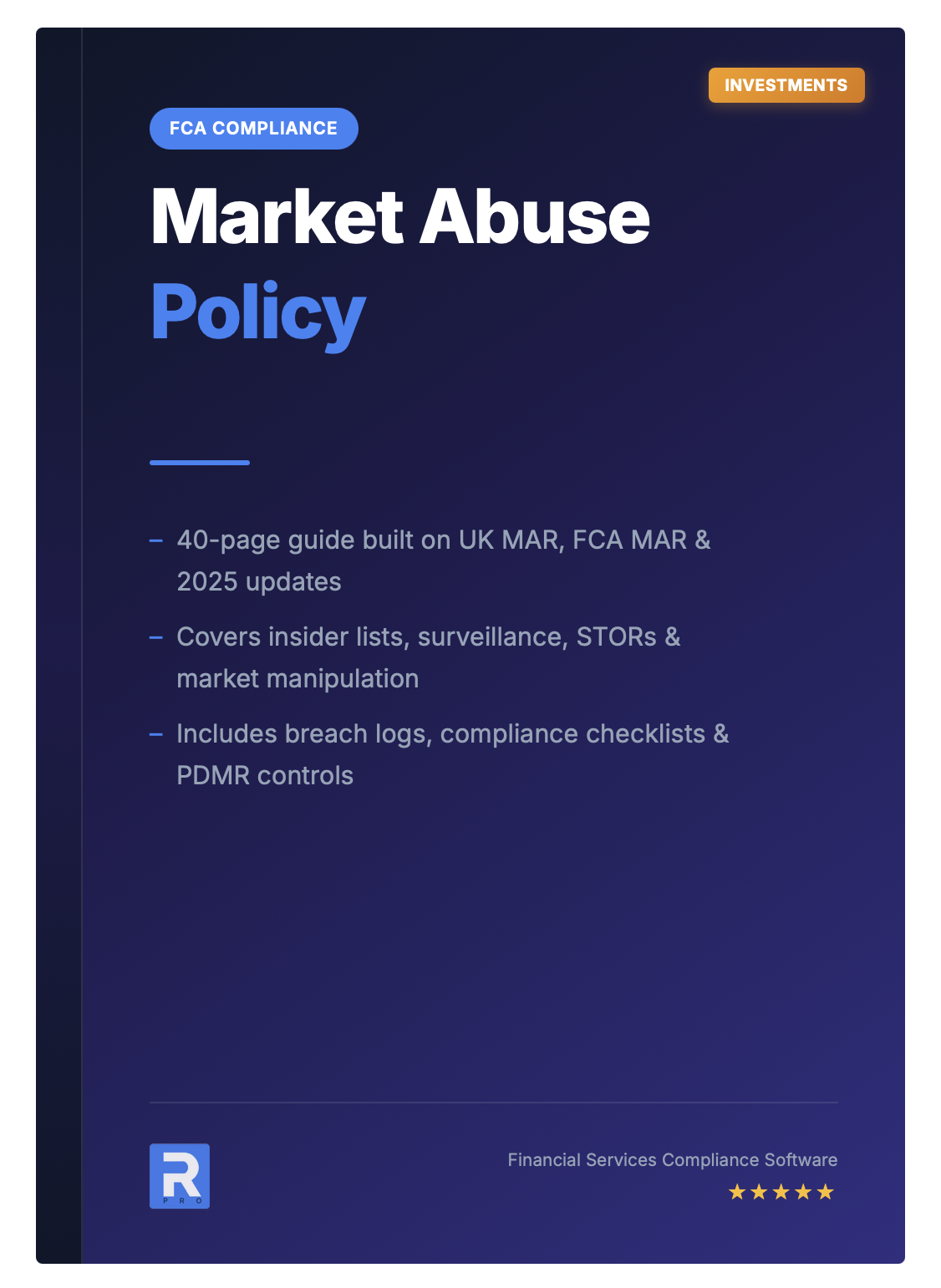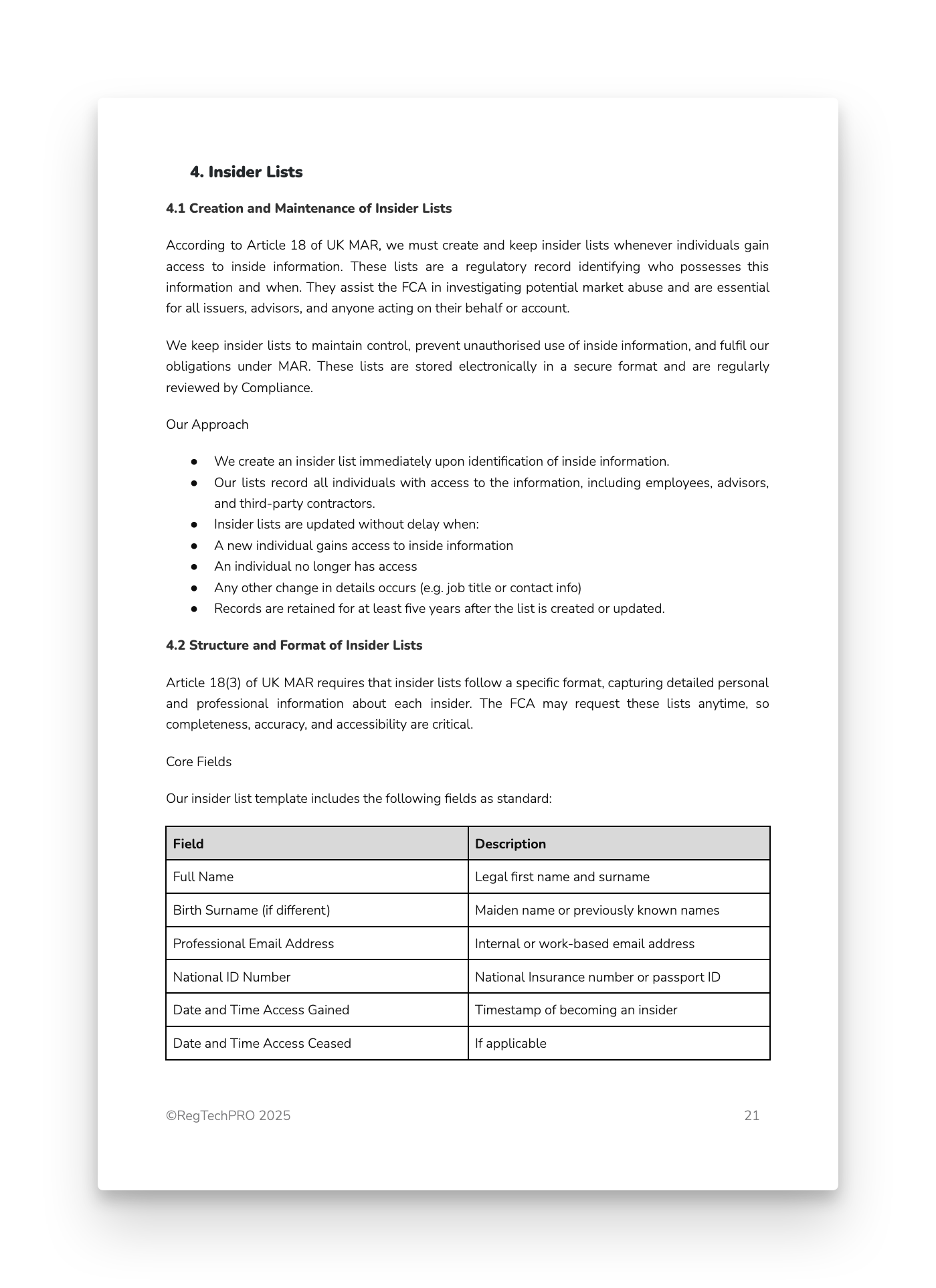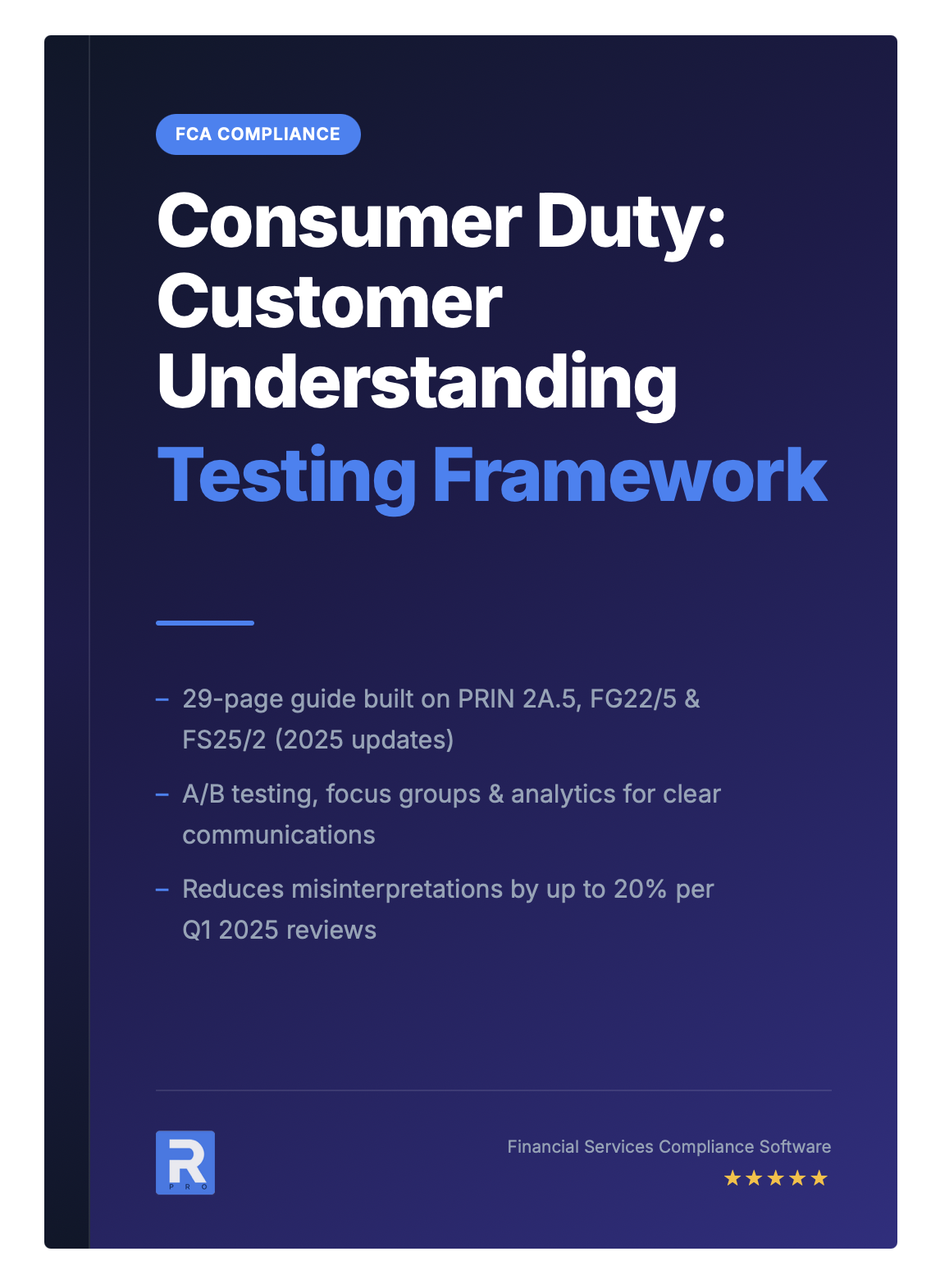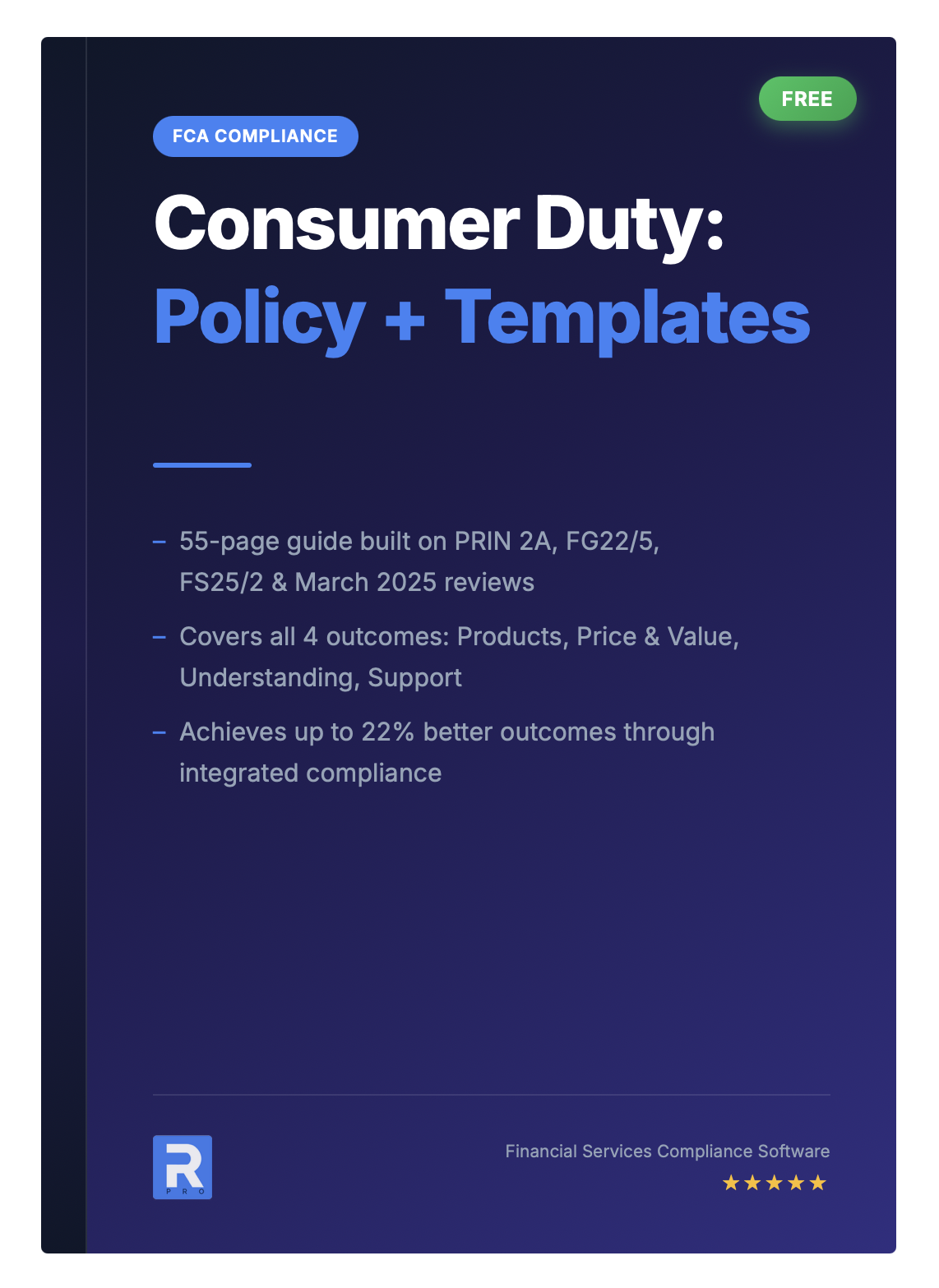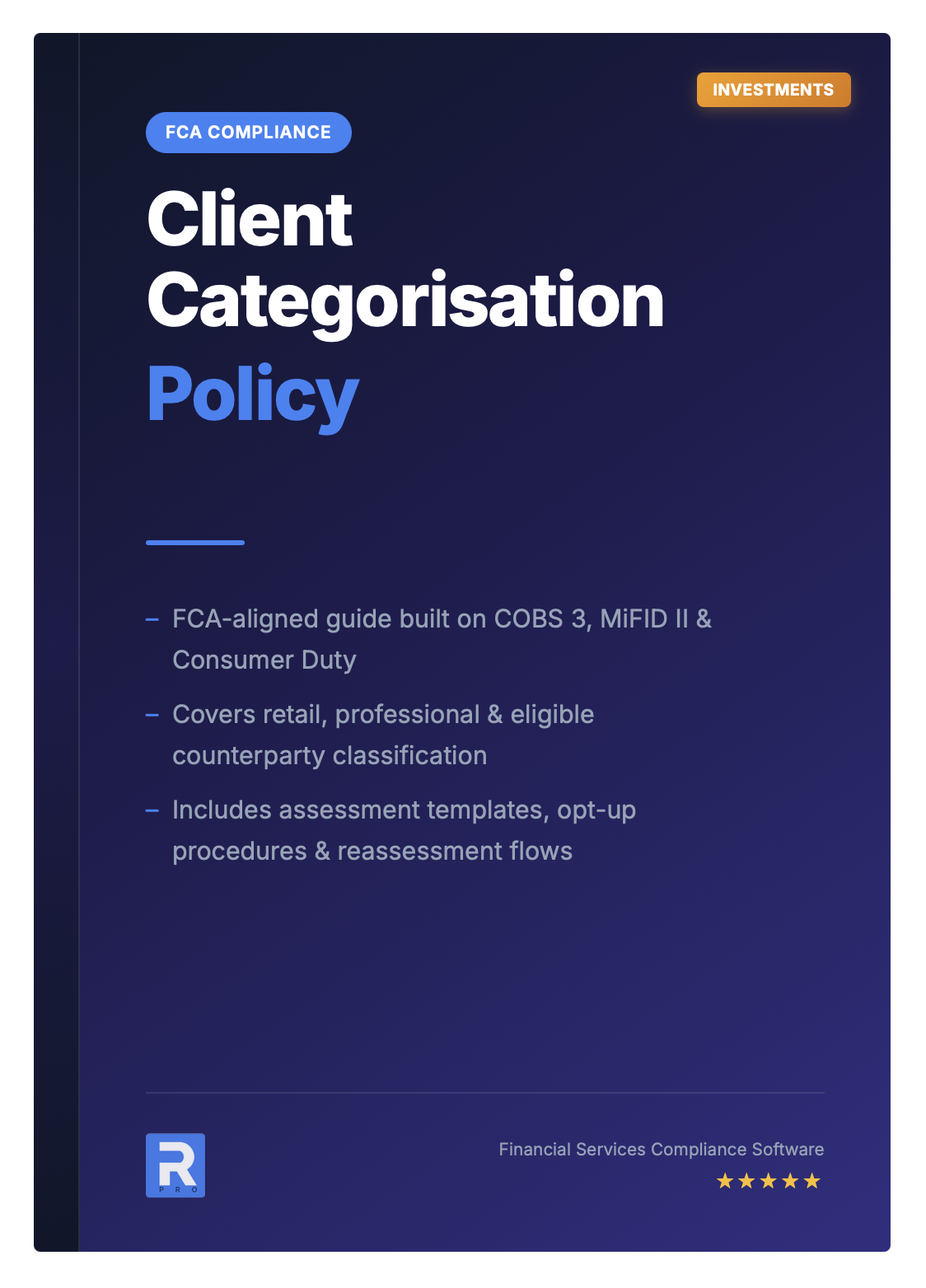 Image 1 of 2
Image 1 of 2

 Image 2 of 2
Image 2 of 2



Client Categorisation Policy
Applies to: Investment Firms
Fully Customisable Guide – Client Categorisation for Investment Firms
Get a fully editable Client Categorisation for Investment Firms Guide, built to help firms comply with the FCA’s requirements under COBS 3 and MiFID II for classifying clients accurately and fairly. This guide provides a complete roadmap for understanding the rules around categorising retail clients, professional clients, and eligible counterparties, ensuring firms apply appropriate protections, disclosures, and service standards at every stage of the client relationship.
The guide breaks down the key concepts and regulatory tests, including per se professional criteria, elective professional opt-up procedures, and eligible counterparty rules. It outlines the specific rights and protections attached to each category, with practical guidance on documentation, record-keeping, and client notifications, ensuring full alignment with FCA expectations.
Templates and process flows for conducting client assessments, reviewing evidence of expertise, and implementing periodic reassessments are included. The guide also highlights common pitfalls, such as misclassification risks and consent procedures, and provides best-practice tips to ensure marketing, onboarding, and suitability checks are tailored to each client category appropriately.
The document also integrates guidance on Consumer Duty considerations, ensuring that firms maintain fairness, clarity, and robust governance even when dealing with high-net-worth or professional clients. It provides compliance teams with practical tools for monitoring categorisation accuracy and reporting breaches internally and to the FCA if necessary.
Ideal for investment firms, wealth managers, platform providers, and compliance officers, this Microsoft Word guide is instantly downloadable and fully editable. It saves time and helps firms maintain a strong compliance posture, ensuring clients are categorised and treated correctly, reducing regulatory risk and strengthening client trust.
Applies to: Investment Firms
Fully Customisable Guide – Client Categorisation for Investment Firms
Get a fully editable Client Categorisation for Investment Firms Guide, built to help firms comply with the FCA’s requirements under COBS 3 and MiFID II for classifying clients accurately and fairly. This guide provides a complete roadmap for understanding the rules around categorising retail clients, professional clients, and eligible counterparties, ensuring firms apply appropriate protections, disclosures, and service standards at every stage of the client relationship.
The guide breaks down the key concepts and regulatory tests, including per se professional criteria, elective professional opt-up procedures, and eligible counterparty rules. It outlines the specific rights and protections attached to each category, with practical guidance on documentation, record-keeping, and client notifications, ensuring full alignment with FCA expectations.
Templates and process flows for conducting client assessments, reviewing evidence of expertise, and implementing periodic reassessments are included. The guide also highlights common pitfalls, such as misclassification risks and consent procedures, and provides best-practice tips to ensure marketing, onboarding, and suitability checks are tailored to each client category appropriately.
The document also integrates guidance on Consumer Duty considerations, ensuring that firms maintain fairness, clarity, and robust governance even when dealing with high-net-worth or professional clients. It provides compliance teams with practical tools for monitoring categorisation accuracy and reporting breaches internally and to the FCA if necessary.
Ideal for investment firms, wealth managers, platform providers, and compliance officers, this Microsoft Word guide is instantly downloadable and fully editable. It saves time and helps firms maintain a strong compliance posture, ensuring clients are categorised and treated correctly, reducing regulatory risk and strengthening client trust.


